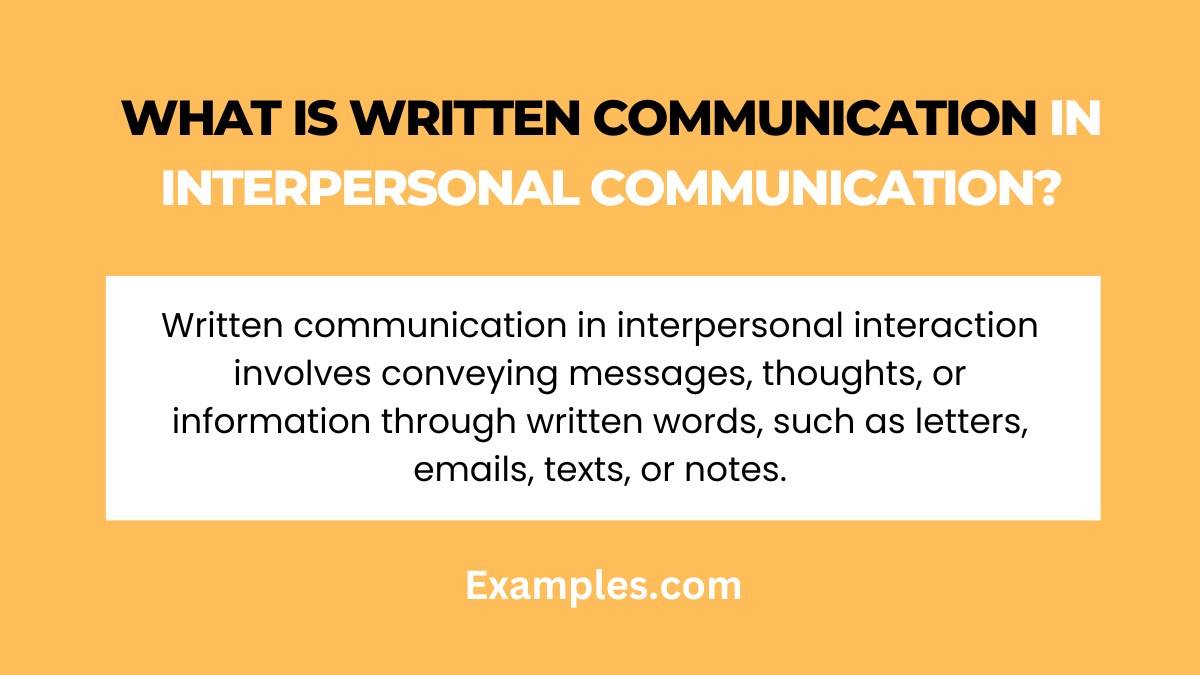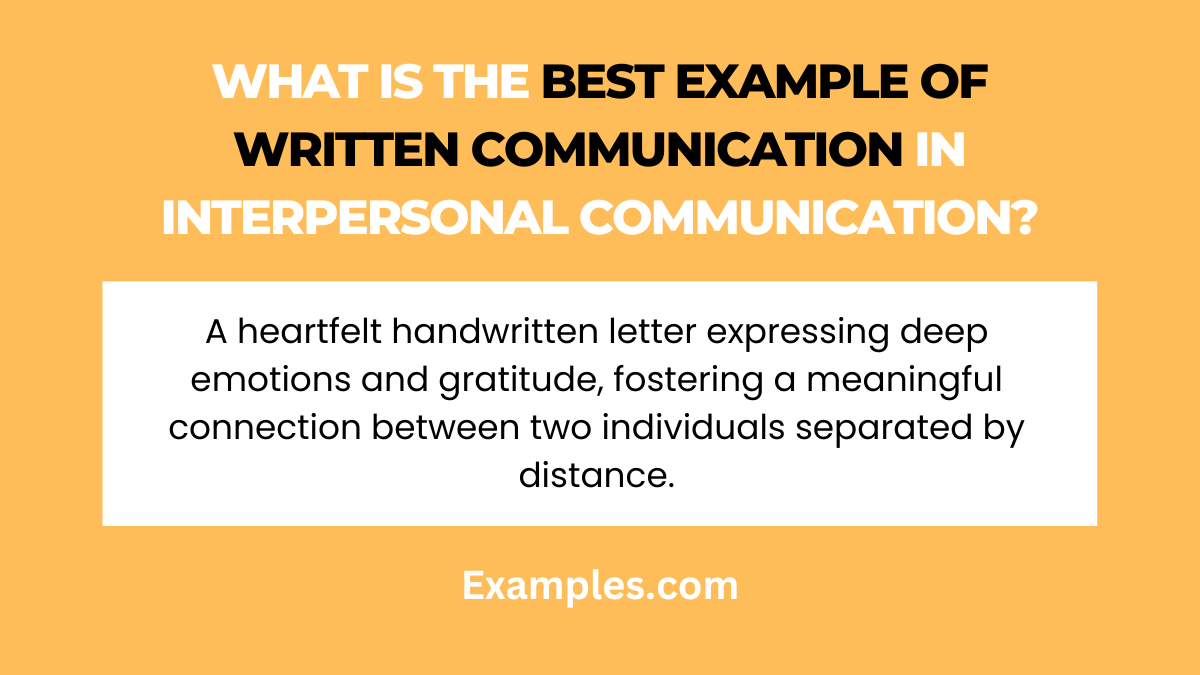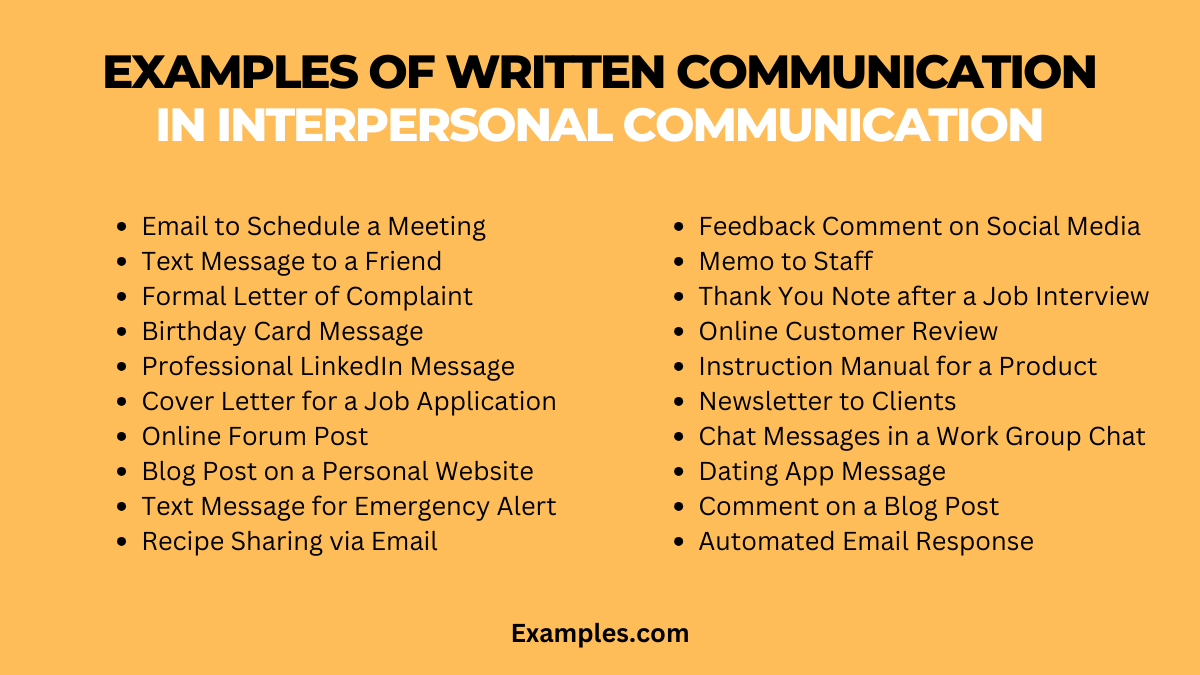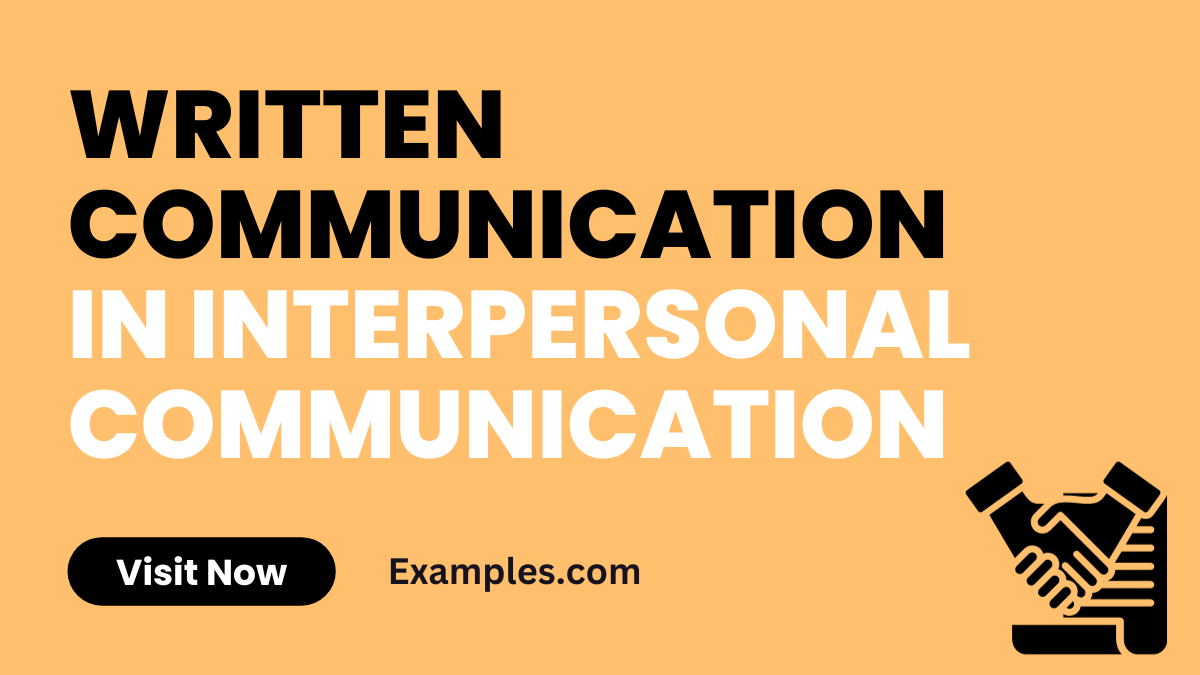Written Communication in Interpersonal Communication
Written Communication in Interpersonal Communication is a pivotal aspect of conveying thoughts and emotions effectively. This comprehensive guide provides practical examples and tips on how to use written communication to enhance interpersonal interactions. Discover how to craft messages that resonate, build relationships, and communicate clearly. This article will empower you with the skills to navigate the nuances of written exchanges in various interpersonal scenarios, incorporating Interpersonal Communication Skills and Types of Interpersonal Communication.
What is Written Communication in Interpersonal Communication?

Written communication in interpersonal communication involves exchanging messages through written text. It is an essential tool for conveying information, expressing emotions, and maintaining relationships in both personal and professional contexts. This section offers a clear and simple definition, helping you understand its significance and application in everyday life.
What is the best Example of Written Communication in Interpersonal Communication?

The best examples of written communication in interpersonal scenarios often include personal letters, emails, or instant messages that effectively convey feelings, intentions, and information. This section delves into detailed explanations of such examples, illustrating how written communication can be utilized to strengthen interpersonal connections and enhance understanding.
20 Examples of Written Communication in Interpersonal Communication

Written communication in interpersonal interactions is pivotal, especially in today’s digital age. It encompasses a variety of formats, from emails to text messages, offering a permanent record and the opportunity for thoughtful, well-structured communication. This guide delves into 20 examples of written communication within interpersonal contexts, each exemplified through clear, illustrative scenarios. Understanding these examples enhances clarity and effectiveness in conveying messages, ensuring effective interpersonal communication.
-
- Email to Schedule a Meeting: “Dear Team, let’s schedule a meeting to discuss our project progress.
Please share your availability.”Email is a formal, efficient way to arrange meetings, providing a record of the conversation. - Text Message to a Friend: “Hey, how are you doing? It’s been a while since we last caught up.”
Text messages are informal and personal, suitable for quick, friendly check-ins. - Formal Letter of Complaint: “I am writing to express my dissatisfaction with the recent service at your store.”
Formal letters are used to address serious concerns or issues, requiring thoughtful composition. - Birthday Card Message: “Wishing you a wonderful birthday filled with joy and laughter.”
Greeting cards convey personal sentiments for special occasions, offering a personal touch. - Professional LinkedIn Message: “I came across your profile and am impressed with your work in digital marketing.”
Professional networking platforms like LinkedIn are used for career-oriented communication. - Cover Letter for a Job Application: “I am excited to apply for the marketing position at your company.”
Cover letters are tailored to specific job applications, highlighting relevant skills and experiences. - Online Forum Post: “Has anyone experienced similar issues with this software update?”
Forums are platforms for sharing information and seeking advice on common interests or issues. - Blog Post on a Personal Website: “Today, I want to share my thoughts on effective time management.”
Blogs allow for sharing personal insights or professional expertise on a chosen topic. - Text Message for Emergency Alert: “Please be aware of the severe weather warning in our area.”
Emergency texts provide critical information quickly to a large audience. - Recipe Sharing via Email: “I thought you might enjoy this family recipe for apple pie.”
Email is a great way to share personal content like recipes with friends or family. - Feedback Comment on Social Media: “Great job on your latest project, really impressive work!”
Social media comments are a casual way to offer feedback and engage with others’ content. - Memo to Staff: “Reminder: Staff meeting this Friday at 10 am in the main conference room.”
Memos are used in professional settings to convey information succinctly to a group. - Thank You Note after a Job Interview: “Thank you for the opportunity to interview for the position. I am very interested in joining your team.”
Post-interview thank you notes express gratitude and reaffirm interest in a job. - Online Customer Review: “I recently purchased this product and have been very satisfied with its performance.”
Customer reviews provide feedback and inform potential buyers about product experiences. - Instruction Manual for a Product: “To start the device, press the power button located on the top panel.”
Instruction manuals provide step-by-step guidance for using a product. - Newsletter to Clients: “Our latest newsletter discusses industry trends and company updates. Have a read!”
Newsletters keep clients informed about company news and industry insights. - Chat Messages in a Work Group Chat: “Can anyone help me with this client query?”
Group chats are a quick way to communicate and collaborate with colleagues. - Dating App Message: “Hi, I came across your profile and think we have a lot in common!”
Messages on dating apps initiate personal connections and potential relationships. - Comment on a Blog Post: “This article was very informative. I hadn’t considered this perspective before.”
Blog comments engage with the content and offer thoughts or additional insights. - Automated Email Response: “Thank you for your email. I am out of the office but will reply as soon as I return.”
Automated responses provide immediate acknowledgment of received messages, informing senders of delays.
- Email to Schedule a Meeting: “Dear Team, let’s schedule a meeting to discuss our project progress.
Strengths of Written Communication in Interpersonal Communication
- Clarity and Precision: Written communication allows for clear, precise expression of ideas, reducing misunderstandings.
- Permanent Record: It provides a tangible record for future reference.
- Thoughtful Expression: Enables careful consideration and structuring of thoughts.
- Global Reach: Breaks geographical barriers, connecting people worldwide.
- Inclusivity: Accessible to diverse audiences, including those with hearing impairments.
- Detail and Depth: Facilitates in-depth explanation and detailed information sharing.
- Professional Appearance: Often viewed as more formal and professional.
- Time Management: Allows sender and receiver to communicate at their convenience.
- Feedback and Revision: Enables review and revision before sending.
- Documented Evidence: Serves as proof in legal and official matters.
What are the Uses of Written Communication in Interpersonal Communication
- Conveying Complex Information: Ideal for detailed explanations and complex concepts.
- Formal Correspondence: Used in professional settings for official communication.
- Building Relationships: Helps in maintaining long-distance personal and professional relationships.
- Instruction and Guidance: Provides clear instructions or guidelines.
- Feedback and Evaluation: Useful for providing structured feedback.
- Record Keeping: Essential for maintaining records of interactions.
- Creative Expression: Enables artistic and creative forms of communication.
- Conflict Resolution: Allows thoughtful responses in sensitive situations.
- Educational Purposes: Key tool in academic learning and instruction.
- Networking and Collaboration: Facilitates connection and collaboration across distances.
Written Communication in Interpersonal Communication Tips
- Be Clear and Concise: Ensure your message is easy to understand.
- Tailor to Audience: Adapt your language and style to your audience.
- Proofread: Always check for grammatical and spelling errors.
- Use Appropriate Tone: Match your tone to the situation and audience.
- Structure Effectively: Organize your content logically.
- Be Mindful of Non-Verbal Cues: Understand that tone and emotion might be harder to convey.
- Use Visual Aids: Incorporate charts, graphs, or images when necessary.
- Be Culturally Sensitive: Be aware of cultural differences in communication.
- Maintain Professionalism: Especially in formal or workplace communication.
- Regular Updates: Keep people informed, especially in ongoing projects or collaborations.
In conclusion, written communication in interpersonal contexts is a versatile and crucial tool. It allows for clear expression and permanence in conveying complex information, fostering stronger connections in both personal and professional settings. The ability to effectively use written communication enhances clarity, fosters inclusivity, and supports diverse communicative needs.



